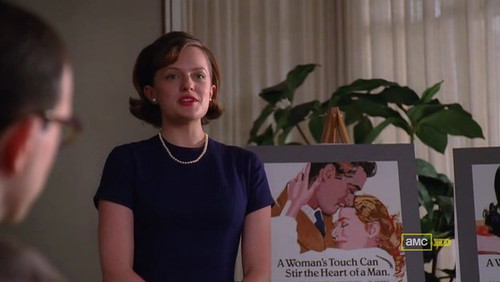I hate selling – both the players and the game. But, for the first 6 years of my career, I ran a consulting company. That meant making sales or going home hungry. I did plenty of the latter before I found a tolerable way to do the former.
Early on in our consulting business, we found clients the traditional way – networking, pitching and responding to RFPs (Request for Proposals). If you’ve ever watched the television show “Mad Men,” you’ve seen this process in relatively accurate detail.

But in 2004, I started blogging about our business, the process we used, the discoveries we’d made and the successes, failures and advice I wanted to share with others. This proved to be a turning point for us – within a year, we weren’t pitching, responding to RFPs or “selling.” We merely had to answer the phone and reply to emails – Inbound Marketing (coined by the Hubspot founders) had shifted the playing field.
As those with an interest in online marketing (and, specifically SEO) read my posts, they’d find value in the writing and, through osmosis, rather than advertising or sales, were imbued with a proclivity for wanting to work with us. Both the concrete value of the advice as well as the tone and voice of the author were judged and, in a few cases, found to be a perfect match. These matches would then initiate conversation and a client/consultant relationship was born.
My wife finds the same thing, as editors and web publishers who stumble across her blog will get in touch and offer her paid writing gigs for websites and magazines. The power of organic demand is remarkable and, more importantly (at least for me), it means not having to do “sales.”
In the summer of 2009, I developed a case of amnesia, forgetting entirely the lessons of my early consulting years. As a result, I spent 3 months pitching 40 venture capital firms without success. The process was massively challenging, occasionally demoralizing and ultimately, fruitless.
Here’s how most of the pitches went:
• An introduction was made by a CEO who had taken funding from (or previously worked with) the VC partner.
• We’d have an initial phone call to discuss SEOmoz’s business, growth to date and the SEO software market.
• If there was interest, we’d schedule time for an in-person meeting, usually at their offices on Sand Hill Road.
• After an initial meeting, if interest persisted, we’d meet again, often with more partners or additional team members.
• A third and final meeting would happen where we’d present to the entire partnership (5-12 folks).
• We’d get a phone call or email in the next 2-4 weeks saying thanks but no thanks. The reasons weren’t very consistent, but the answer was.
Here’s how it worked out:

In hindsight, I was an idiot.
Our first round of investment came from Ignition Partners & Curious Office, neither of whom I pitched – they found SEOmoz, thought it was interesting, got in touch, and took a chance. The deal moved fast. The terms were excellent. And we used the money to build something pretty remarkable.
But in this second round, I forgot the lessons of my consulting past, and thus, was doomed to repeat it.
Here’s my advice to other entrepreneurs, particularly in these irrationally exuberant times: Don’t start pitching until you’ve been pitched.
If VCs, angels and other investors aren’t knocking at your door (read: emailing you to ask how it’s going and if they can grab coffee or a phone call), you shouldn’t be knocking at theirs. Yes – you CAN potentially raise money through the classic door-to-door pitch process, but it’s ugly and hard and you’ll have to fight tooth and nail for every line in the deal. But, if you can generate inbound interest, the power dynamic shifts and everything gets easier.
The time I spent trying to raise a B round was the most wasteful 3+ months I’ve had at my job. Product was ignored; vision went unfulfilled; opportunity went unexecuted. Don’t make the same mistake – generate buzz with your success, your traction and press (PR is invaluable in the VC process – another big misstep we made). And let the investors come to you.
p.s. The company did not end up raising a second round of capital, but has been profitable and growing since Dec. 2008 (so we didn’t “need” the money).